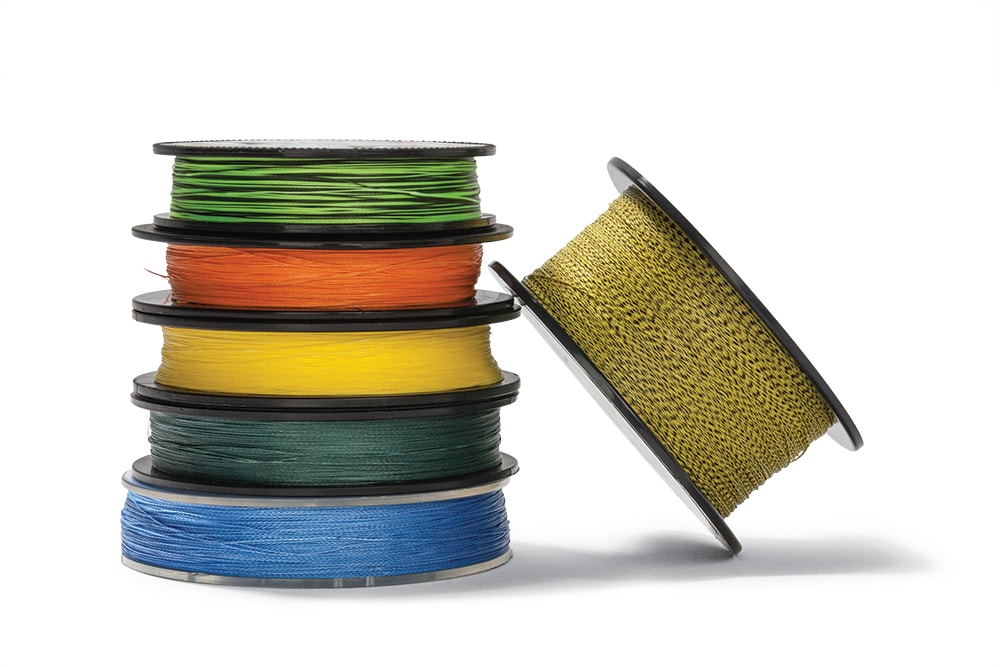
“Why are you using pink fishing line?” I joked to a fishing buddy years ago.
“It used to be red fishing line; I never would have picked pink braid!” he snapped back quickly.
The truth is, he isn’t the only angler to experience “faded-braid syndrome” over the past decade. Symptoms include seeing a dramatic change in polyethylene line (spun from strands of Dyneema or Spectra), with red turning to pink, yellow fishing line reverting to white, and dark green fishing line waning to lime.
Since anglers discovered the fading, line companies have been proactive, spurred by anglers’ buying habits. New, different proprietary techniques are now used by colored fishing line manufacturers to get as much lasting color out of their fishing line as possible.
So what’s the best braided fishing line color for saltwater? And does the color of fishing line matter? The truth is, no single color of braided line has ever proved to cause fish to bite more readily, but that shouldn’t preclude fishermen from being mindful when selecting line. For this column, we’re not accounting for any other features involved in today’s braided fishing line — just color. Consider these factors the next time you’re among a polychromatic smorgasbord of colored fishing lines.
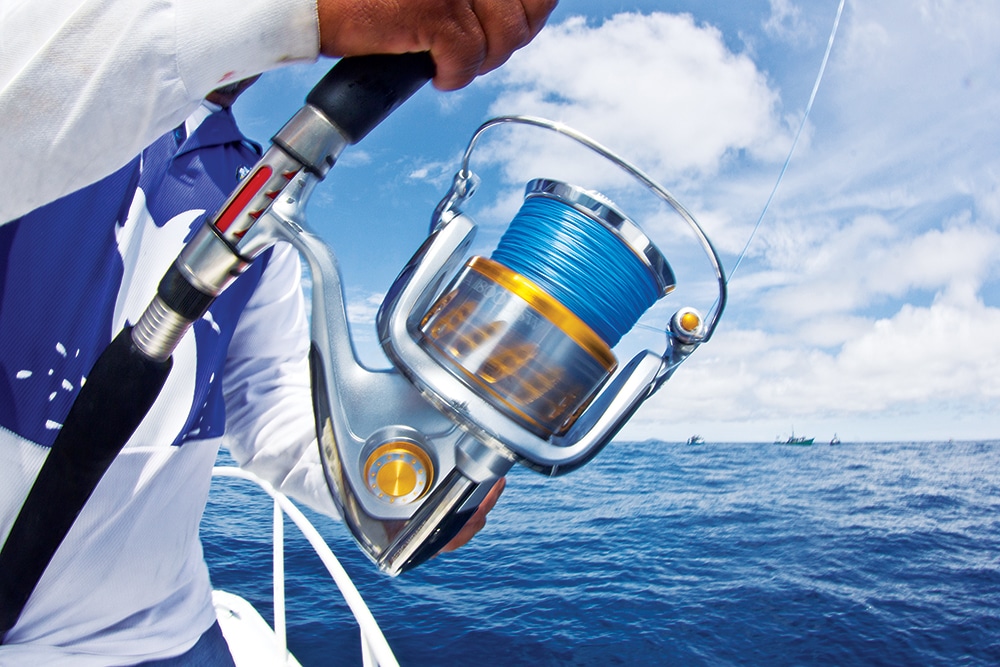
Coat of Armor
Braided line is in a constant battle with color; polyethylene (PE) fiber is naturally a white, opaque color. One unshakable property of braid is that it’s hydrophobic, causing dyed colors to bleed. Companies use specific processes (held close to the vest) to maintain dyed color firmly in their braids.
For example, Cortland‘s proprietary process is called Fiber Tech. But any number of methods used by different manufacturers have the same purpose, to drastically reduce color fading and increase durability.
“Polyethylene fiber cannot be dyed like traditional fibers, since you cannot bond a dye molecule to this class of fiber,” says Konrad Krauland, PowerPro’s division president. “This leaves ‘painting,’ or surface coating, the only option. PowerPro has made significant advancement in recent years in both our coating system as well as resin management in our Enhanced Body Technology process, making colors far more stable and longer lasting on current line than even five years ago.
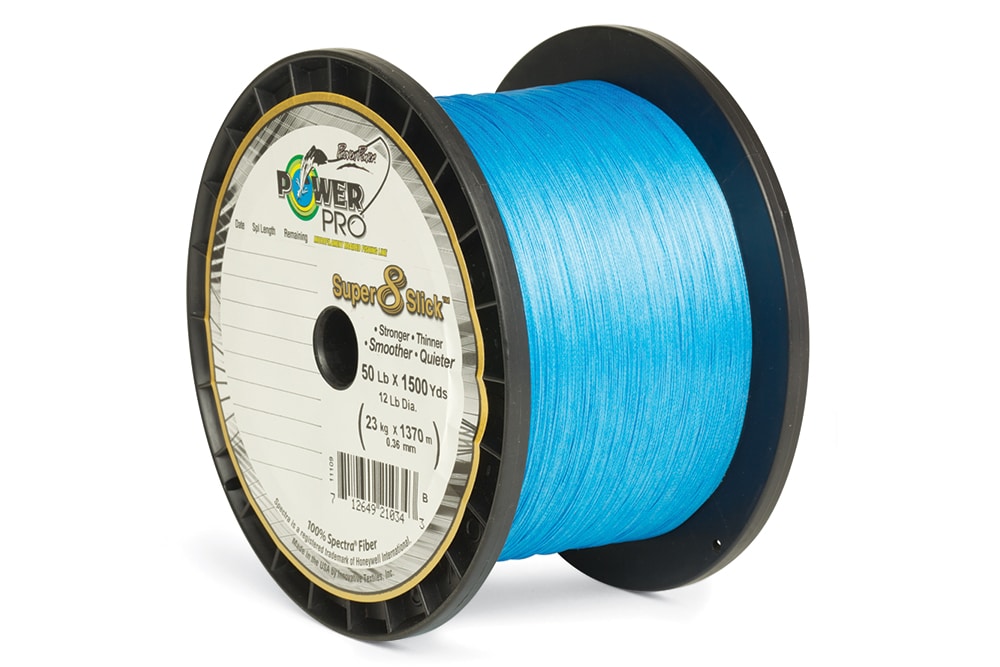
“Manufactured coatings are vital to keep the color of braided lines, and the companies that best figure out how to capture color have the advantage.
“We’ve developed a process to color PE fibers so lines won’t shed or bleed immediately,” says Ted Thibault, sales manager at TUF-Line. “The coating on TUF-Line XP features true, permanent coloration and abrasion resistance for a long service life with zero shedding.”
TUF-Line‘s SuperCast takes it one step further. Because SuperCast has a mono core and braided outside, TUF-Line can heat it, extrude it, and add slickness and coating so that “it feels like mono, acts more like a braid, but makes permanent coloration possible,” Thibault explains.
Ben Miller, project manager at Sufix, cautions anglers from believing there is a cure-all method to maintaining perfect coloration in PE lines. There are just too many factors manipulating the line, he says.
“Coatings added after a line is dyed definitely help retain color,” says Miller, “but coating eventually comes off.” Even acidity affects coloration, he says. The higher the acid content in water — the saltier the water — the more likely the line is to lose color.
Wear-and-tear is also a detriment: Abrasion affects the color of the PE line physically. That’s partly why Sufix 832 Advanced Superline puts a priority on abrasion resistance. In 1,000 cycles of use, Sufix 832 had little abrasion and still a consistent round profile, according to line tests by Sufix.
What’s the Viz?
The conventional usage of high-viz and low-viz braided lines has evolved in recent years, as anglers found new ways to utilize the lines both inshore and offshore.
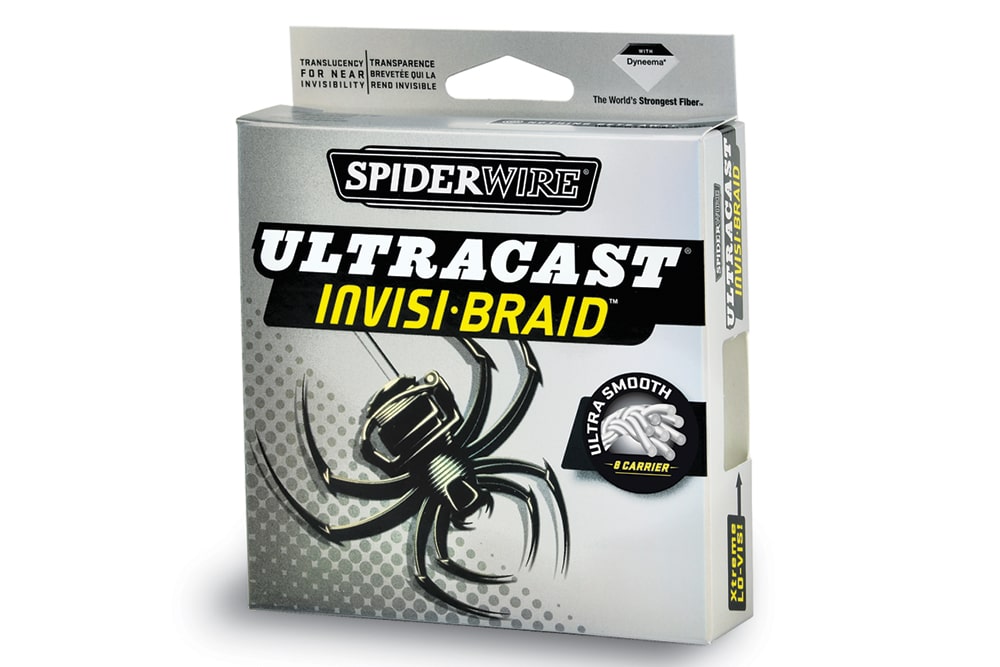
Traditionally, bronze and green are great line colors for inshore saltwater fishing, says Mark Schindel, director of sport-fishing and outdoor products at Cortland Line.
Muddy substrate, sea-grass flats, oyster bottom and off-colored water help the line disappear, offering a stealthy approach to stalk fish.
“For offshore, especially when using multiple rods in the spread, high-viz colored lines make fishing easier,” Schindel says. “Let’s say I’m running three lines in an outrigger: blue, yellow and red. The color quickly lets me determine which rod was bit. With multiple hookups, different-color lines make it quicker and easier to direct the angler to the right rod.”
Cortland added red to its Master Braid series in 2013 because red is the first color to go “neutral” in the water column, usually about 15 feet deep. (To be forthright, red does not disappear underwater; it just becomes darker as depth increases.)
“I like low-viz colored lines because inshore baitfish aren’t spooked if they swim across it,” says Capt. Jim Ross, of Fireline Fishing Charters in Rockledge, Florida, “but more important, game fish don’t pay much attention to it either. Fish swim under or over dark‑green line like it’s a grass.”
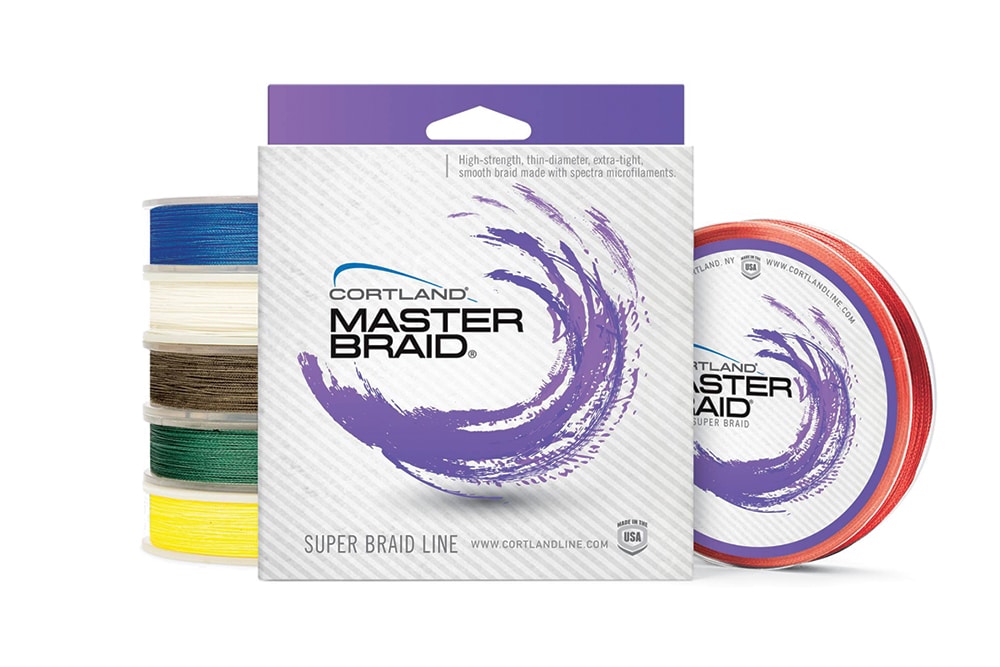
But Ross also uses high-viz lines — colors like whites, yellows, reds and oranges — for inshore applications, depending on the skill level of his anglers. Because most fishing applications now involve adding a leader of fluorocarbon before the hook, stealthy braid is not an absolute necessity.
“With high-viz lines, my anglers can follow the lures and have an approximate idea where the lure is during the retrieve,” Ross says. “They’re able to follow it, and this helps greatly when sight-fishing. High-viz colors also show twists and knots, easier for us to get the tangles undone right away.”
Berkley’s FireLine Crystal braided line has reduced visibility underwater, but is a white color above water for fishermen to see. The best of both worlds is lower visibility for the fish with higher visibility for you, says Berkley.
A Metered Response
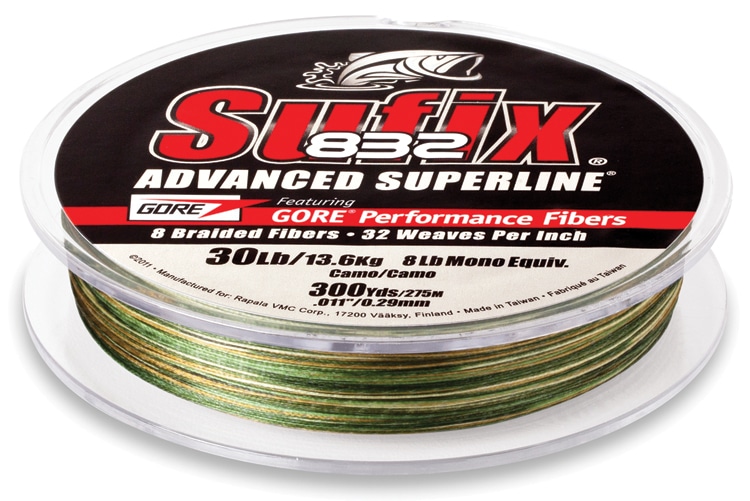
One step beyond high-viz color is what most line manufacturers call “metered” or “indicator” lines, containing different sections of colored line throughout a spool, marked in short, equal lengths. PowerPro Depth-Hunter, TUF-Line XP Indicator, Berkley Trilene Tracer Braid and Sufix Metered Performance Braid all incorporate short sections of different colors, allowing anglers to count out how much line is in the water.
“Trilene Tracer is an alternating low-viz green and high-viz chartreuse, which allows you to tie your leader to the low-viz section and still have alternating high-viz,” says Clay Norris, Pure Fishing’s senior product manager. “It’s fun to fish with, and truly helps you ‘trace’ and track your line.”
Other lines incorporate more than just two colors. PowerPro’s Depth-Hunter changes color every 25 feet (blue-yellow-green-orange), with the colors repeating every 100 feet, plus an additional 2-centimeter black hash mark every 5 feet. Multicolored lines have numerous applications, including precision vertical jigging and trolling.
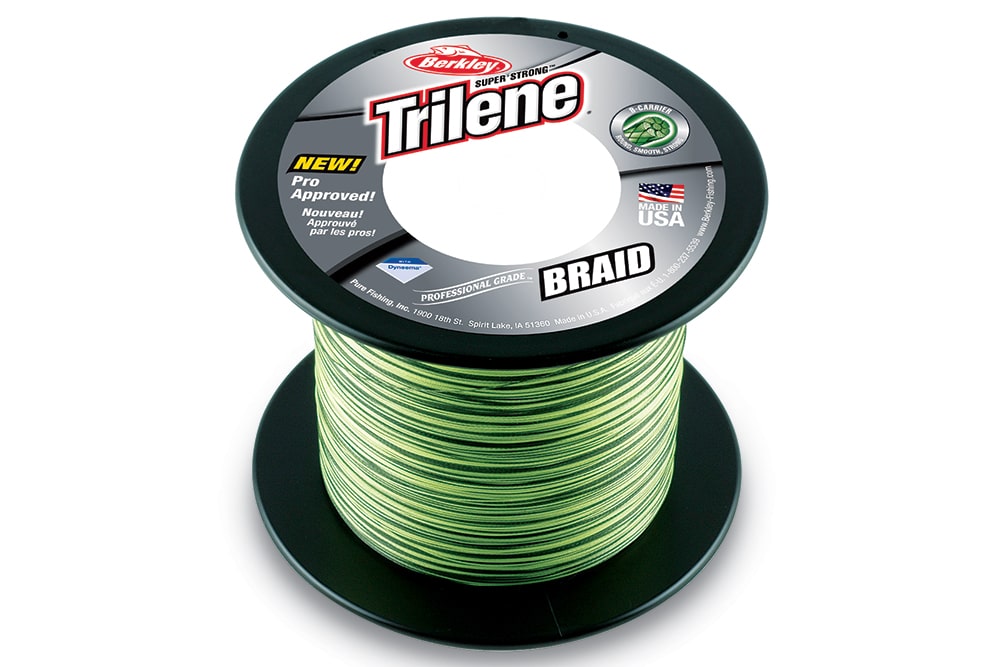
“When vertical jigging, if you mark fish 25 feet off the bottom, you can quickly drop your jig to the bottom, and then easily wind it up one color to be where the fish are,” said Bob Mahoney, with PowerPro.
For trolling, the color changes make it easy for anglers to set lures at various measurements behind the boat.
“As anglers dial in their trolling pattern, Depth-Hunter provides the ability to keep lures at the precise distance behind the boat to troll at the needed depth or distance,” Mahoney says.
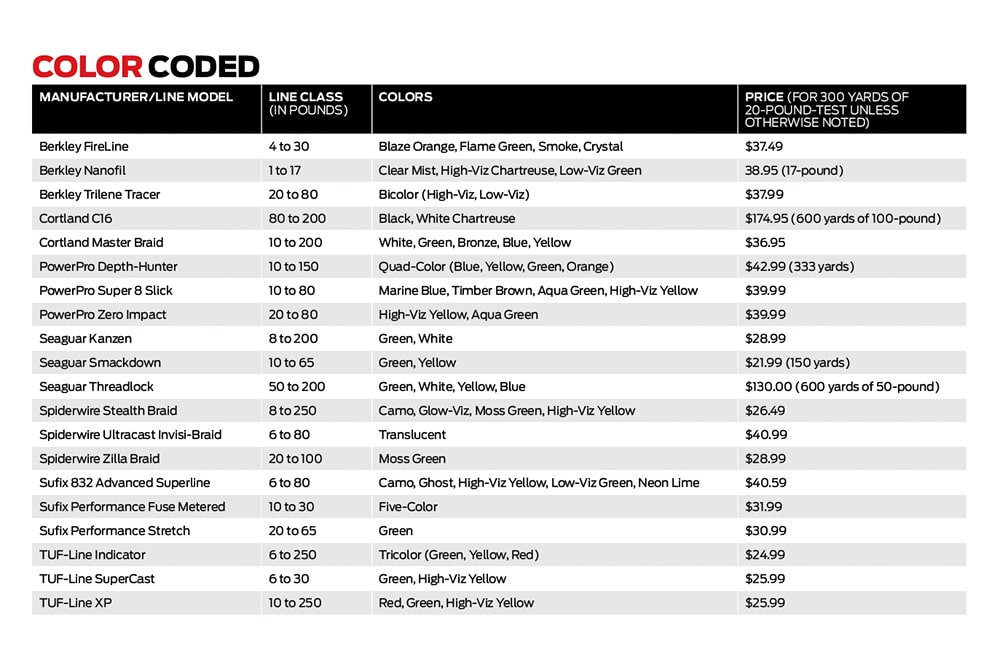
Whether you’re offshore jigging or trolling, or inshore fishing, think twice before picking a braided fishing line color just because it matches your boat or reel. There’s likely an advantage to a specific hue that you might not have considered.








